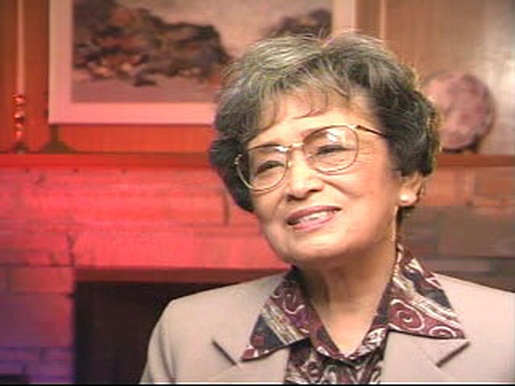

Japanese American Women and Activism Within the JA Community: Redress, Reparations, and Gender
 cshikai
cshikai
|

|
||
| Licensing | ||
Cherry Kinoshita, Introduction
Cherry Kinoshita was born and raised in Seattle, Washington, and from a very young age took interest in involving herself in leadership-type activities. It started with being president of various organizations in elementary through high school and starting up a newsletter in middle school, then bloomed into involvement with the Redress movement through the Japanese American Citizens League (JACL). That early interest in leadership set the stage for the rest of her life, although she did not know it until many years later.
Cherry describes her relationships with both her parents, and her own family, as one of few words. While she was involved with the campaign for Redress, she did not very often speak to her relatives about the issues, or about her work. There were language barriers, and more often things within her family were silently understood.
When Cherry and her family were interned at Minidoka, she had struggled very much alongside the other Japanese Americans on the mainland who suffered the same fate. And following the end of the war, Cherry eventually returned to Seattle, where she became involved in the local JACL chapter. Although she initially joined for social reasons, she eventually became conscious of, and interested in, civil rights issues. This led inevitably to her involvements in the Redress and Reparations movement.
Cherry lobbied in such a way that made her known to legislators in Congress. She was persistent, motivated, and knew exactly what needed to be done to get her point across. She spoke up fearlessly about the JA community’s struggles and needs, and helped ensure the success of the campaign.
Cherry’s experience is very common for Japanese American, Nisei women, in terms of family life, and opinions about how a woman should or should not be. That is, in discussing the campaign, for example, Cherry expressed in an interview with Densho the expressive nature of Nisei women. Women are allowed to show emotion, to be sad or happy, or cry about something, whereas men are not socially allowed this luxury. This “depth of feeling,” as she calls it, is one reserved for women to show, not men.
This perspective on just one gender role is illustrative of the gender dynamics that play out within the JA community, and that were played out during the Redress and Reparations campaign. But while Cherry would cry about her experiences, this same woman also fought courageously to push the Redress bill through Congress. This JA woman helped make history for the Japanese American community, and bring justice where it belonged.
Source: Densho Digital Archive, http://archive.densho.org/main.aspx. Visual History Collection: Densho Visual History Collection: Cherry Kinoshita Interview.
Based on this original

|
Cherry Kinoshita, Introduction |
 Japanese American Women and Activism Within the JA Community: Redress, Reparations, and Gender
Japanese American Women and Activism Within the JA Community: Redress, Reparations, and Gender
 Journal feed
Journal feed
